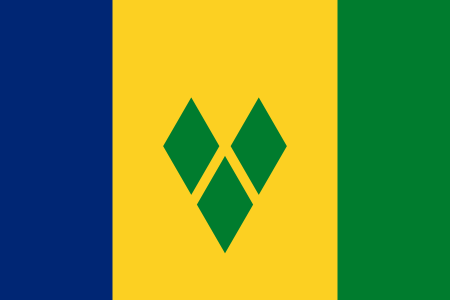 Saint Vincent and the Grenadines (pronounced /seɪnt ˈvɪnsənt ænd ðə ˌgrɛnəˈdiːnz/) is a nation in the Lesser Antilles chain, namely in the southern portion of the Windward Islands, which lie at the southern end of the eastern border of the Caribbean Sea where the latter meets the Atlantic Ocean. Its 389-square-kilometre (150 sq mi) territory consists of the main island of Saint Vincent and the northern two-thirds of the Grenadines, which are a chain of smaller islands stretching south from Saint Vincent Island to Grenada. To the north of St. Vincent lies St. Lucia, to the east Barbados.
Saint Vincent and the Grenadines (pronounced /seɪnt ˈvɪnsənt ænd ðə ˌgrɛnəˈdiːnz/) is a nation in the Lesser Antilles chain, namely in the southern portion of the Windward Islands, which lie at the southern end of the eastern border of the Caribbean Sea where the latter meets the Atlantic Ocean. Its 389-square-kilometre (150 sq mi) territory consists of the main island of Saint Vincent and the northern two-thirds of the Grenadines, which are a chain of smaller islands stretching south from Saint Vincent Island to Grenada. To the north of St. Vincent lies St. Lucia, to the east Barbados.
Saint Vincent and the Grenadines is densely populated (over 300 inhabitants/sq km) with its 120,000 people. Its capital is Kingstown, also its main port. The country has a French and British colonial history and is now part of the Commonwealth of Nations and CARICOM.
While the official language is English, most Vincentians speak a dialect known as Vincentian Creole. English is used in education, government, religion, and other formal domains, while Creole (or ‘dialect’ as it is referred to by locals) is used in informal situations such at home and among friends. The various ethnic groups also still use their native languages such as Portuguese and Bhojpuri.

Notes from Wikipedia








